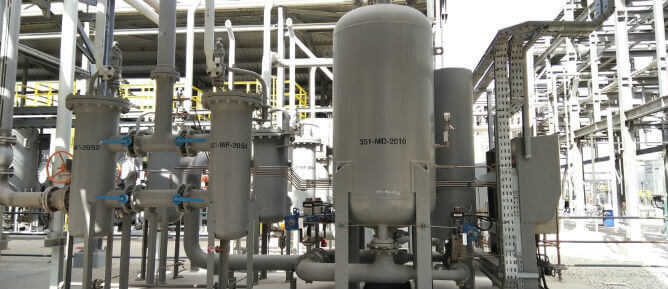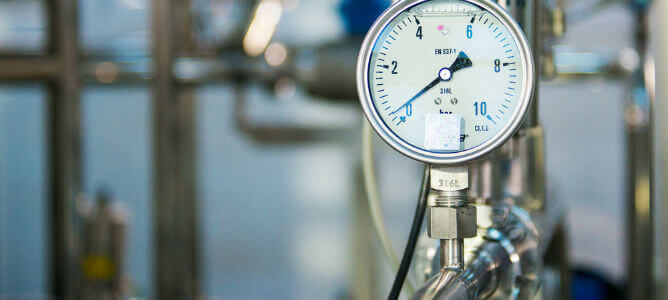
Dew Point in Compressed Air – Why It Matters to Your Profits
Compressed air systems are frequently used across industrial manufacturing processes for cooling, heat generation, equipment maintenance, and power tool operation. During the production of compressed air, an unavoidable by-product is water vapor which condenses onto the air compressor system or attached process components.
While a little moisture within a compressed air system is to be expected, the accumulation of significant condensation can damage sensitive equipment and deteriorate the quality of finished products. In this regard, monitoring the compressed air dew point is vital to ensuring the working life of your machinery is preserved and your product quality is standardized.
ISO 8573.1 addresses three critical impurities in compressed air: excess moisture, particulates, and oil. This compressed air standard sets forth testing parameters designed to maintain proper purity levels in compressed air.
What Is Dew Point in Compressed Air Systems?
The dew point of an air compressor system refers to the temperature at which vaporized water is condensed into its liquid state at the same rate at which it is evaporating. At this temperature, the compressed air is fully saturated and can no longer hold water vapor.
For industrial operators who use compressed air systems for manufacturing, constant dew point monitoring is necessary to prevent instrument damage and minimize process contamination.
Is Dew Point Measured in Degrees?
The dew point temperature of compressed air is measured in Fahrenheit using a dew point thermal sensor. For most systems, the dew point temperature of the air is maintained within a range of 50°F to 94°F. At this temperature, the water suspended in air will precipitate and start to collect on compressor components.
If accurately read, dew point sensors will allow operators to implement different methods of water removal and preserve the integrity of their machinery.
Why Is Dew Point Important in Compressed Air Applications?
Maintaining moisture within certain levels is critical to preserving the function of sensitive industrial equipment. If left unchecked, moisture precipitated from compressed air at its dew point can trigger corrosion of metallic machinery leading to costly system failures and downtime for maintenance.
Also, unwanted moisture within the compressed air supplied to industrial processes can have undesirable impacts on product quality. Accumulated water vapor can pass impurities including dust and bacteria to sensitive food and drug manufacturing processes rendering their output unsafe for consumption.
The financial implications of moisture damage to air compressor systems make the case for why all operators must strictly monitor water saturation in their air systems.
Dew Point and Pressure Relationship
There is a clear link between the dew point at which compressed air becomes saturated and the pressure at which it is being conducted. For any gas, an increase in the pressure is followed by a corresponding increase in its dew point.
A series of calculations and conversions are done manually or using software that can accurately predict the dew point of air and help operators put appropriate moisture elimination protocols in place.
How Does Dew Point Differ from Pressure Dew Point?
In practice, the terms “dew point” and “pressure dew point” are frequently used interchangeably. However, this substitute is not accurate.
While the dew point refers to the temperature at which air becomes saturated under atmospheric pressure conditions, the pressure dew point is defined as the dew point of gas measured at pressures above normal atmospheric level.

How to Measure Dew Point in Compressed Air
The dew point of compressed air can be accurately measured using a dew point sensor which is a device specifically built for this purpose. Similar principles of operation apply to all dew point measurement tools regardless of manufacturer.
Outlined below are key factors to consider when attempting to measure the dew point of compressed air.
Instrument Selection
The first step in assessing the dew point is the selection of the right dew point instrument. Some manufacturers make devices that measure very high dew points while other manufacturers craft sensors optimal for measuring lower dew points.
To avoid errors in measurement, operators must purchase the device most suited to their air compression unit.
Understanding Variations in Instrument Pressure Characteristics
Some dew point sensors are suited to measuring moisture saturation at atmospheric pressure, while others more accurately relay dew point readings at higher operating pressures. Again, you must select the right measuring device based on the pressure characteristics of your compressed air system to ensure the most error-free results.
Correct Sensor Installation
Dew point sensor installation kits come with specific instructions on proper installation. Adhering to manufacturer guidelines while fitting a dew point sensor will help ensure its optimal functioning.
Nitrogen Dew Point Temperature
Due to its inert nature, nitrogen gas can be used in several industrial processes including equipment flushing procedures. Gaseous nitrogen passed through a system or process will effectively eliminate moisture and oxygen without altering any critical chemical reactions. The dew point of dry nitrogen gas usually has a temperature of around -94°F.
For cost-efficient nitrogen gas production in the field, consider using an on-site nitrogen generator from NiGen.
NiGen Is Your One-Stop Shop for Industrial Air Solutions
At NiGen we are committed to providing you with the highest-quality compressed air-drying solutions for use in various industrial applications. If you are looking for effective compressed air generation and maintenance equipment, NiGen is for you.
Contact us online today for more information about industrial air compressor rentals and other products and services we offer.
